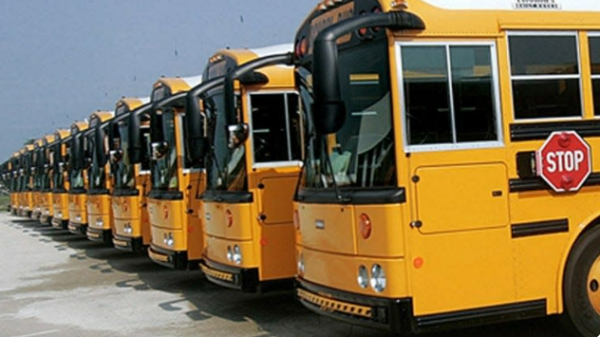Investigation continues into accidental on set shooting death of cinematographer Halyna Hutchins by actor Alec Baldwin
Actor Alec Baldwin (left) claimed in a recent interview that he never pulled the trigger on the gun that discharged during a scene rehearsal on the set of Rust, killing cinematographer Halyna Hutchins {right} and wounding director Joel Souza.
Actor Alec Baldwin accidentally fired a gun, killing cinematographer Halyna Hutchins, 42, and injuring director Joel Souza, 48, while rehearsing a scene on the set of his upcoming film Rust on Oct. 21. Investigators have been focused on learning who loaded the gun and how it passed multiple inspections before ending up in Baldwin’s hand. People view this incident as a catalyst for a more comprehensive discussion on the use of real firearms on film sets.
Baldwin reports that he was not informed that the gun was loaded when it was handed to him by an assistant director. In fact, Baldwin told ABC’s George Stephanopoulos that he never pulled the gun’s trigger in an interview aired on Dec. 2. This, despite the fact that the gun was not even supposed to be loaded. This concerned investigators, who began to look into what exactly happened on set.
According to NBC News, “In 2016, The Associated Press found that since 1990, at least 43 people have died while on sets in the U.S., and more than 150 were left with life-altering injuries.”
Film sets are required to have a weapon’s master, a person who has specific government permits to manage weapons and supervise their use. According to actorsequity.org, it is the responsibility of the weapon’s master to “check the cylinders and barrel [of a firearm] to make sure no foreign objects or dummy bullet [have] become lodged inside” before the weapons are used.
Hannah Gutierrez-Reed was just one of the weapon’s masters on the set of Rust. The weapon was checked by Gutierrez-Reed before lunch, then was secured in a safe that only a few people had access to; however, the ammunition was not locked up and secured. “Propmaster Sarah Zachry took the gun out of the safe after lunch and handed it to Gutierrez-Reed after lunch,” according to buzzfeednews.com.
“The armorer also said that during the course of filming Rust, she had handed the gun to Baldwin ‘a couple times,’ as well as to assistant director Dave Halls. According to Gutierrez-Reed, no live ammunition ‘is ever kept on set.’” Gutierrez-Reed then deemed the weapon a “cold gun.” Obviously, there was live ammunition when it discharged, killing one person and injuring another.
While a “cold gun” references one that is unloaded and safe to handle, the gun handed to Baldwin was anything but safe. The scene he was rehearsing required him to draw a revolver and point it toward the camera. It was at this moment when the gun discharged, killing Hutchins and wounding Souza in the shoulder.
Although some TV shows and movie sets require the presence of weapons, there is clearly a lack of adhering to established safety protocols when dealing with firearms, in this case leading directly to the deadly incident on Rust’s set. For example, it is basic gun safety to treat a firearm as if it is always loaded. So, this was clearly not the case, as Baldwin aimed for the camera and the gun discharged.
Also, when handling a firearm, it is strictly not allowed to place a finger on the trigger. It is only acceptable to do that if one intends on shooting what the gun is aimed at. This is to protect everyone around the firearm. One should always point the firearm at a slight angle, toward the ground. This is so that if the gun does accidentally fire, it is aimed at the ground, and at worst, will shoot someone in the foot.
Nevertheless, tragedies such as the Rust incident still occur. Notably, actor and son of martial artist Bruce Lee, Brandon Lee, was shot and killed in 1993 while shooting the film The Crow. Lee was filming a scene in which his co-star, Michael Massee, shot and killed him. Massee believed he was to shoot Lee with blanks, but no one on set was aware that a 44-caliber bullet was lodged in the barrel of the gun, The Washington Post reported.
The gun involved in the Baldwin shooting was reported to have been loaded with live rounds. These differ from the alternative of “blanks,” which are cartridge cases without bullets. Many believe blanks to be safe, but The New York Times explains that they can still cause harm. They often have gunpowder and paper or wax to create a spark and add to the authenticity of a scene, which can cause burns if someone is hit with them.
“In a post on Lee’s official Twitter page, his relatives expressed their condolences to Hutchins’ family and insisted that such tragedies should never happen,” according to CNN. “‘Our hearts go out to the family of Halyna Hutchins and to Joel Souza and all involved in the incident on Rust,’ read the message from the account, which is run by his sister, Shannon Lee. ‘No one should ever be killed by a gun on a film set. Period.’”
Regardless of whether or not blanks had been utilized on the set of Rust, there still was the risk of injury and, unfortunately, death. If there is the option to use an alternative like blanks as opposed to real bullets, then one question must be raised: Why wouldn’t the film elect to use blanks instead of live rounds?
The answer to this question could be that Rust is set in the 1880s, and specific weaponry from that period is required for the authenticity of the film. The Associated Press spoke to director and cinematographer Steven Hall about the issue with antique weaponry and the use of blanks. He explained that it is vital “to make sure that they [antique weapons] do function in a way that when you put a blank in, it isn’t going to blow up or explode in the actor’s hands.”
Hall also highlighted the protective measures that have been taken in films he has worked on, which include Fury and Thor: The Dark World when guns have to be pointed toward the camera. He told the Associated Press, “I’m normally protected by safety goggles, a safety visor, and often a PERSPEX screen that withstands pretty much anything.”
This tragedy has sparked a massive debate about the safety of firearms on movie sets and if there is a need for them at all. With today’s computer-generated imagery, or CGI, technology, there seemingly is no need for real gunshots when they can be added in using technology during post-production.
Unfortunately, not all productions can handle the thousands of dollars required to obtain this technology in their films. Rust is an independently-produced film, so it was filmed on a tight budget. This leaves little room for special effects technology to edit in gunshots. However, the limited budget could have led to the lack of oversight on set, possibly leading to the death of Hutchins and the wounding of Souza.
Baldwin’s accredited career as an actor, from his legendary film roles in Beetlejuice, The Hunt for Red October, and The Departed and television features such as 30 Rock and his recently praised impression of former President Donald Trump on Saturday Night Live, has caused this situation to gain traction. Other celebrities have hopped online to give their condolences to Hutchins’ and Souza’s families, as well as to discuss safety measures to be taken moving forward.
Not only has this fatal incident raised questions about firearms on sets of movies and TV shows, but it has also led to multiple lawsuits and potential criminal charges. In multiple different lawsuits for negligence and wrongful death, Baldwin, Halls, Hannah Gutierrez-Reed, Sarah Zachry, and others have been named as defendants. Although authorities have yet to release information as to whether or not criminal charges will be brought, the likelihood is high that these people who are most likely at fault for what happened will be held responsible in one way or another.
“Sources also told the news outlet that the law firm would file the wrongful death suit on behalf of Matthew Hutchins [Halyna Hutchins’ husband] and his son, nine-year-old Andros,” guardian.ng reported, adding that “there will be multiple defendants in the lawsuit.”
Dwayne “The Rock” Johnson said that due to this tragedy, his company, Seven Bucks Productions, will no longer use real firearms, and it will switch to using rubber guns. The actor is known for many of his action films such as Hobbs & Shaw, Central Intelligence, and Netflix’s Red Notice, so this announcement carries a lot of weight with productions that involve firearms. Johnson appears to be making an effort to limit the number of real firearms on set in order to prevent the deaths of innocent people and prevent actors from killing their co-workers.
“We’re going to switch over to rubber guns, and we’re going to take care of it in post [production],” Johnson informed Variety. “We’re not going to worry about the dollars; we won’t worry about what it costs.”
Many hope that Johnson’s course of action will influence more production companies to stop using real firearms as well in an effort to prevent future loss of innocent life. With the impact Baldwin’s involvement had in the shooting bringing this issue into the public eye, it will take the involvement of more prominent figures for effective changes to be made.











